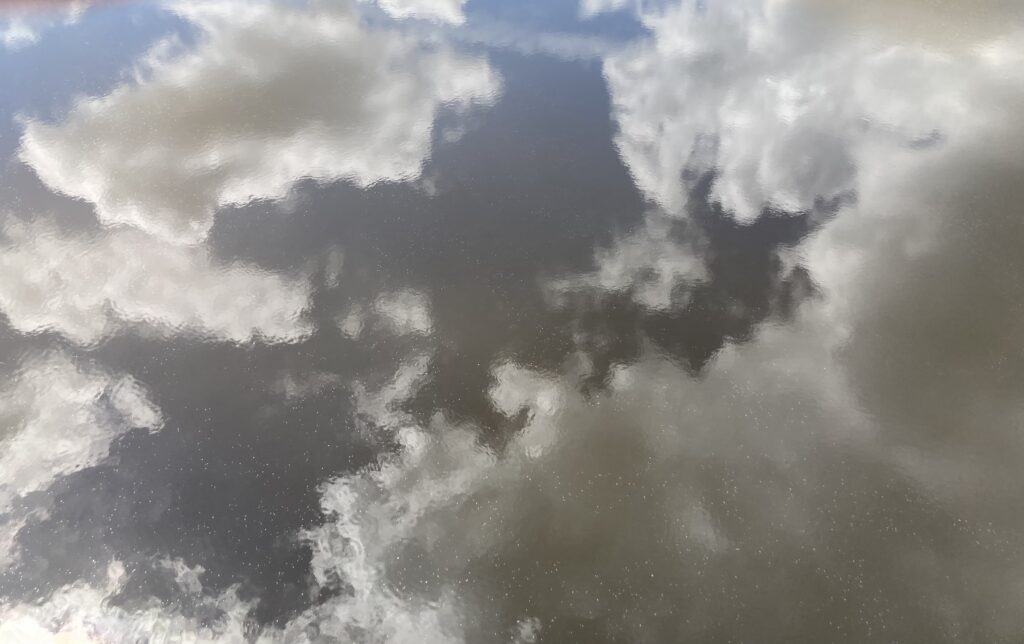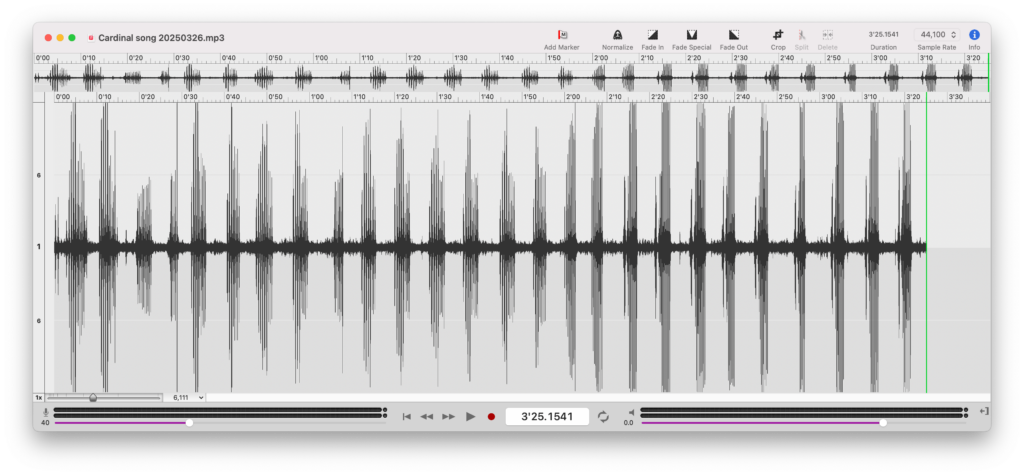4.5 miles
veterans home (reverse)
36 degrees
After 4 days in Chicago visiting my sister, a great run. A wonderful trip and a wonderful return. I felt relaxed and strong and steady. Ran for 45 minutes without stopping. A big mental victory. And I didn’t feel wiped out at the end — a big physical victory. I kept my splits steady instead of speeding up too much in the second and third mile. I think that helped. I should be mindful of the second and third mile in future runs.
I ran south and then, instead of continuing on to the falls, I ran up the wabun hill and by the veterans’ home first. Then over the bridge, through the park, past the falls and up and out of the park. I almost always stop at my favorite viewing spot, but didn’t today. Hooray for mental strength!
10 Things
- click clack — roller skiers behind me as I neared the locks and dam no 1
- overheard — one roller skier to the other: hey — do you want to go to the falls and then turn around? another skier: sure!
- open view: above the oak savanna, near the spot where the hills split and you can see the river
- empty benches
- the rumble of a jack hammer
- a cacophony of chirping birds in the trees between the veterans’ bridge and the falls — such a convention!
- the creek was brown and subdued
- the falls were flowing, but thinner
- on the cobblestones beside the falls: a small stretch of ice
- waved to a regular: Santa Claus!
before and after the run
Before the run, I was thinking about chants and remembered the performance of a poem I had seen in the movie, Poetry in Motion. I looked it up: The Cutting Prow: For Henri Matisse/ Ed Sanders. What I had remembered, and wanted to hear again as inspiration was the chanting,
Scissor scepter cutting prow
Scissor scepter cutting prow
Scissor scepter cutting prow
Scissor scepter cutting prow
I’ve been thinking that my rock, river, and air chants should do something like this: repeating the essence/the form of something through the chanting of a few significant words. As I ran, I might have briefly thought about this chant/these ideas/this poem, but not in ways that I can recall now.
After the run, I watched Sanders’ full performance of the poem again and found it online:
THE CUTTING PROW: FOR HENRI MATISSE/ Ed Sanders
“The genius was 81
Fearful of blindness
Caught in a wheelchair
Staring at death
But the Angel of mercy
Gave him a year
To scissor some shapes
To soothe the scythe
And shriek! shriek!
Became
swawk! swawk!
The peace of
Scissors.
There was something besides
The inexpressible
Thrill
Of cutting a beautiful shape—-
For
Each thing had a ‘sign’
Each thing had a ‘symbol’
Each thing had a cutting form
-swawk swawkk___
to scissor seize.
‘One must study an object a long time,’
the genius said,
‘to know what its sign is.’
The scissors were his scepter
The cutting
Was as the prow of a barque
To sail him away.
There’s a photograph
which shows him sitting in his wheelchair
bare foot touching the floor
drawing the crisscross steel
a shape in the gouache
His helper sits near him
Till he hands her the form
To pin to the wall
He points with a stick
How he wants it adjusted
This way and that,
Minutitudinous
The last blue iris blooms at
The top of its stalk
Scissors/scepter
Cutting prow
(sung)
Ah, keep those scissors flashing in the
World of Forms, Henri Matisse
The cutting of the scissors
Was the prow of a boat
To take him away
The last blue iris
Blooms at the top
On a warm spring day
Ah, keep those scissors flashing
In the World of Forms, Henri Matisse
Sitting in a wheelchair
Bare feet touching the floor
Angel of Mercy
Pushed him over Next to Plato’s door
Scissor scepter cutting prow
Scissor scepter cutting prow
Scissor scepter cutting prow
Scissor scepter cutting prow
ahh
swawk swawk
ahh swawk swawk
ahh swawk swawk.”
When I first heard/saw this a few years ago, I was drawn to the sound of the scissors and the words he repeated, but now I’m also thinking about Matisse and the cutting forms. Very cool. I might have to return to shadows, silhouettes, and forms and look into Matisse some more!
an hour, or so, later: Watching Poetry in Motion from the beginning, I encountered this great bit during the opening credits:
You don’t want to lead anyone in any subjective sense, to push anything onto them, you know. I mean, you could say teach in a certain way but it’s like putting light in people’s eyes, you know. Just opening the door but not showing them around and telling them, this is the chair, this is table, but saying, here’s the room and turning on the light.
Poetry in Motion





